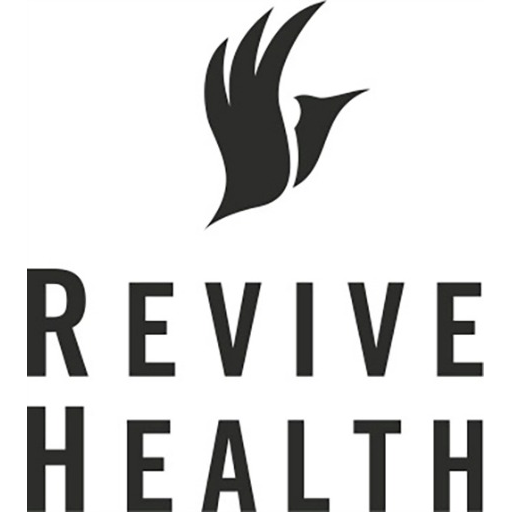Revive Health 11 May 2015 // 2:18PM GMT

Excerpts from ReviveHealth EVP Chris Bevolo's recent op-ed, Silo Smashing: The New Landscape of Healthcare Marketing Communications, featured in the March issue of Health Strategy Alert, the magazine for Forum of Healthcare Strategies.
I grew up in Iowa, where silos dot the landscape for as far as the eye can see. The silo’s main purpose, of course, is to store grains, but if you grew multiple crops, it was a way to store your corn separate from your soybeans. It’s that purpose that serves as an analogy for silos in healthcare organizations, providing for the separation of different functions.
In the healthcare marketing communications, or marcom, world, there are often a number of silos, including marketing; public relations/ communications (sometimes internal communications is its own silo); physician relations/sales; business development; research/planning; and now, digital. The term silo typically has a negative connotation in our world, conveying the often myopic and isolated views and behavior of the different departments within marcom. Still, defined departments do serve a valuable purpose in helping organizations strategically tackle the very different worlds of marketing, public relations (PR), and more.
At least that’s been true for the last few decades. But like a tornado rolling across the Iowa countryside, market forces and changes in our industry are toppling silos left and right. And all those separate “grains”—marketing, PR, digital, and so on? They’re all flowing together in ways that could cripple a marketing communications operation that doesn’t know how to respond.
The Great Marcom Mash-Up
Consider these scenarios that have rendered formerly solid silos unwieldy:
◆ The old model prioritized paid media first, then earned media, then owned. That model has been flipped on its head, and, today, owned media—in terms of content marketing—is a top strategy for marketers, demanding an approach that crosses departments.
◆ SEO is a key marketing pursuit and is usually managed from within the web/ digital area. But the real key to SEO is great content—a communications issue.
◆ Content marketing is claimed by the marketing department, the communications/PR department, and the digital department—what’s the right approach?
◆ Social media: who owns it, and how is it leveraged?
◆ Who supports population health management communications: patient education? PR? marketing? (The answer is: all of them!)
Making Sense of the Mess
These are just a handful of examples, and the list goes on and on. If you’re confused by all of these changes and unsure how or whether to restructure your departments to better meet the challenges of the new world, you’re not alone. Healthcare marcom leaders nationwide are asking: “I know the world has changed and digital and content marketing are incredibly important. I want to change, but I have no idea how. Do I have the right people? Is my budget allocation right? Where do I start?”
Here are three principles for navigating the new healthcare marcom landscape.
1. Watch out for new silos.
Even though the old silos are breaking down, the marcom team still needs experts in specific areas, including digital specialists who understand CRM, search, and the web; PR specialists who understand media relations or investor relations; and marketing specialists who understand how to drive the right patients for the right services (something that will always be required to sustain a successful provider enterprise, regardless of the Affordable Care Act). The challenge now is to avoid slowly slipping into building new silos.
For instance, many organizations are building a digital marketing team separate from the marketing team. These aren’t just specialists—the digital titles include directors, vice presidents, and there’s even talk of the Chief Digital Officer, who would work alongside the Chief Marketing Officer (CMO). But to thrive in the new world, the CMO must understand digital, as must all executive-level positions throughout the marcom organization.
Adopting a real digital marketing mindset will likely require the creation of a distinct digital team—but marketing and digital marketing should not be viewed as distinct efforts or departments, because digital is simply one component of marketing overall. It just so happens that the most effective marketing channels and strategies today are digital in nature. And once digital marketing is mastered, it will no longer be thought of as a distinct and separate effort. To get there, leadership has to understand digital at a certain level—all leadership, including marketing, PR, and physician relations.
2. Develop overarching strategies and planning.
Many healthcare organizations are developing a digital strategy to outline how digital tools, channels, and resources will be used. But effective use of those tools, channels, and resources requires that they be integrated throughout all marcom disciplines. So creating a digital strategy distinct from an overall marcom plan or strategy would be like creating a billboard strategy distinct from an advertising plan. To survive in the new world, at least three plans or strategies need to integrate across all disciplines.
First is brand strategy, which defines how the organization is positioned in the market in a unique and compelling way. Your brand strategy will serve as a foundation for all of your marketing efforts, no matter which silo they reside in, and will actually reach much broader than your marcom discipline, as it first and foremost drives who you are and how you act as an organization.
Second is a content strategy, which serves as the guiding document for the creation, implementation, and management of content across the enterprise. A typical content strategy flows from the brand strategy and provides targeted audiences and audience personas, key messages, style guidelines, content development roles, content development and management structure, and much more.
An organizational content strategy will impact web content, social media, collateral and patient education materials, and marketing campaigns— indeed, any content that issues from the organization. An organizational content strategy helps ensure that everyone who develops content in the organization, across disciplines, is working with the same voice and messaging platform.
Finally, an organizational marcom plan is a must in the new world. Surprisingly, many health systems don’t have such a plan. Developing one is essential because it will force the consideration and integration of all disciplines to address the organization’s greatest marcom challenges.
3. Reevaluate your vendor ecosystem.
The new world isn’t just breaking down silos within hospitals and health systems; it’s causing upheaval in the creative services industry. Advertising agencies whose business models depend on commissions from large media buys and ad campaigns are struggling to find a new way. PR firms are still working to move beyond a reliance on press releases and media relations. The list goes on, and for hospitals and health systems that want to move forward, any vendor partners that are stuck in the old world will likely hold them back.
How the marcom leader manages this depends on the organization’s preferred vendor model: sole-source or a collection of partners. Neither is right or wrong, but both hold challenges. If you prefer one marcom partner to handle all of your needs, you can find them, but you must be diligent. An ad agency that “does it all” will still likely prioritize mass advertising. A PR firm that “does it all” will still likely prioritize PR and media relations. Even for integrated marcom firms that can do it all, make sure they can walk the talk. Just because they have marketing, PR, and digital specialists doesn’t mean they all work together in an integrated way. Ask to see examples of a blended approach to confirm the whole is greater than the sum of the parts.
On the other hand, many organizations prefer a collection of partners, each focused on an area of specialty. An ad agency for the large campaigns. A PR partner for media relations and crisis communications. A digital firm for website design or online advertising. The problem, of course, is that one hand may not know what the other is doing. For example, is your ad agency working with your digital firm to ensure maximized search strategies?
Furthermore, because these silos are breaking down, using a vendor that specializes in one area may actually leave you short. For instance, your most powerful marketing weapon—the foundation for all of your efforts—is your website. Having a digital firm design your site seems intuitive enough, but if the firm isn’t approaching the site from a marketing perspective (not to mention a PR perspective, in terms of brand journalism), the site may not support your overall marketing goals sufficiently.
The key to making this model work is ensuring you have partners that have no qualms about working with other vendors. The only way to truly succeed in the new world with a collection of partners is for them to function as a true team, without concern for territory, budget, or ego.
Ready for the New World
In the end, for the healthcare marcom team of the future, internal departments will continue to serve a purpose, allowing the organization to staff for specific discipline expertise. Now more than ever, the marcom leader’s goal is to ensure that teams don’t become entombed in hardened silos. The new world of healthcare marcom won’t allow it.
By Chris Bevolo, Executive Vice President of Consumer Engagement at ReviveHealth


































.jpg)












